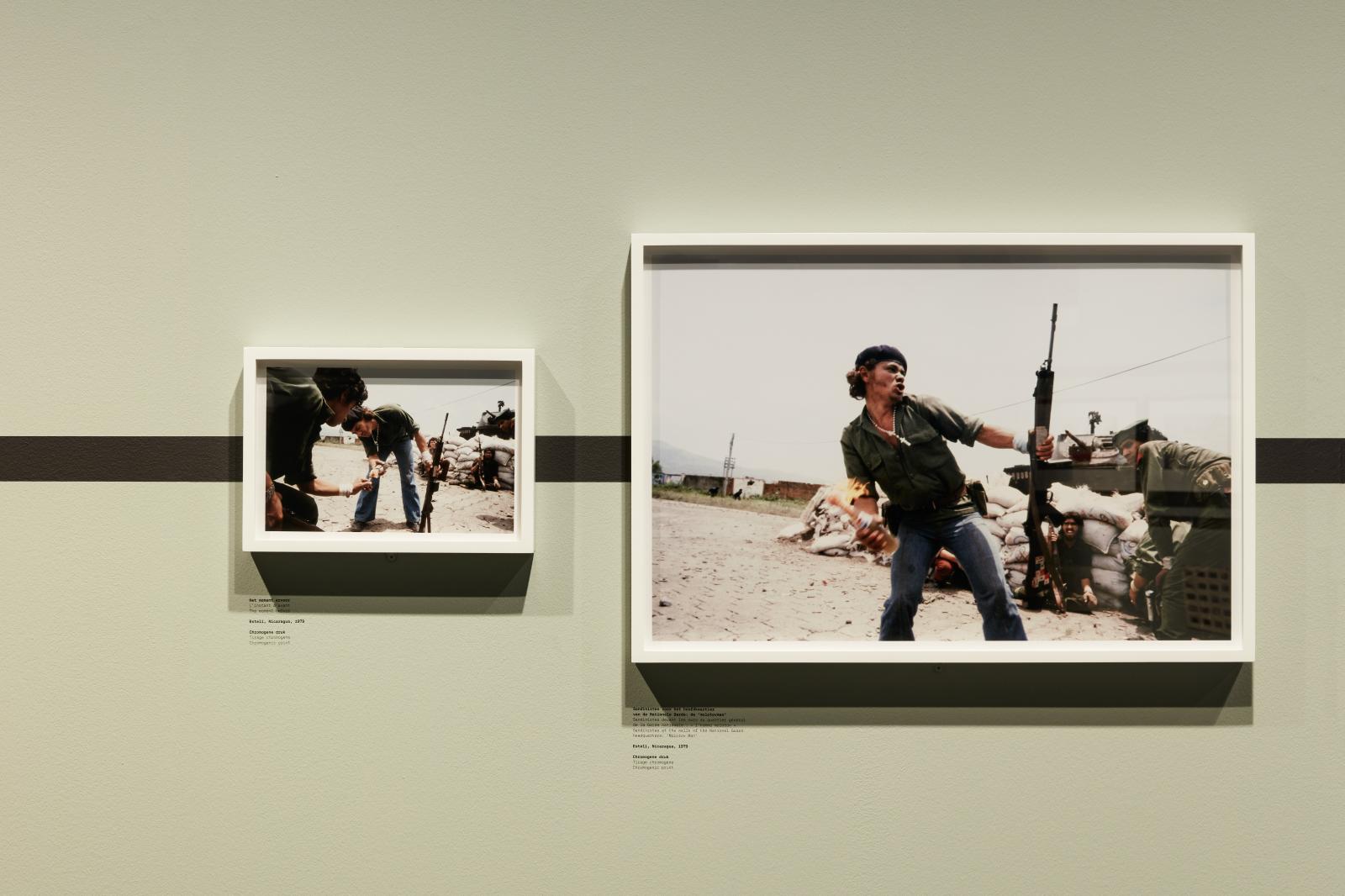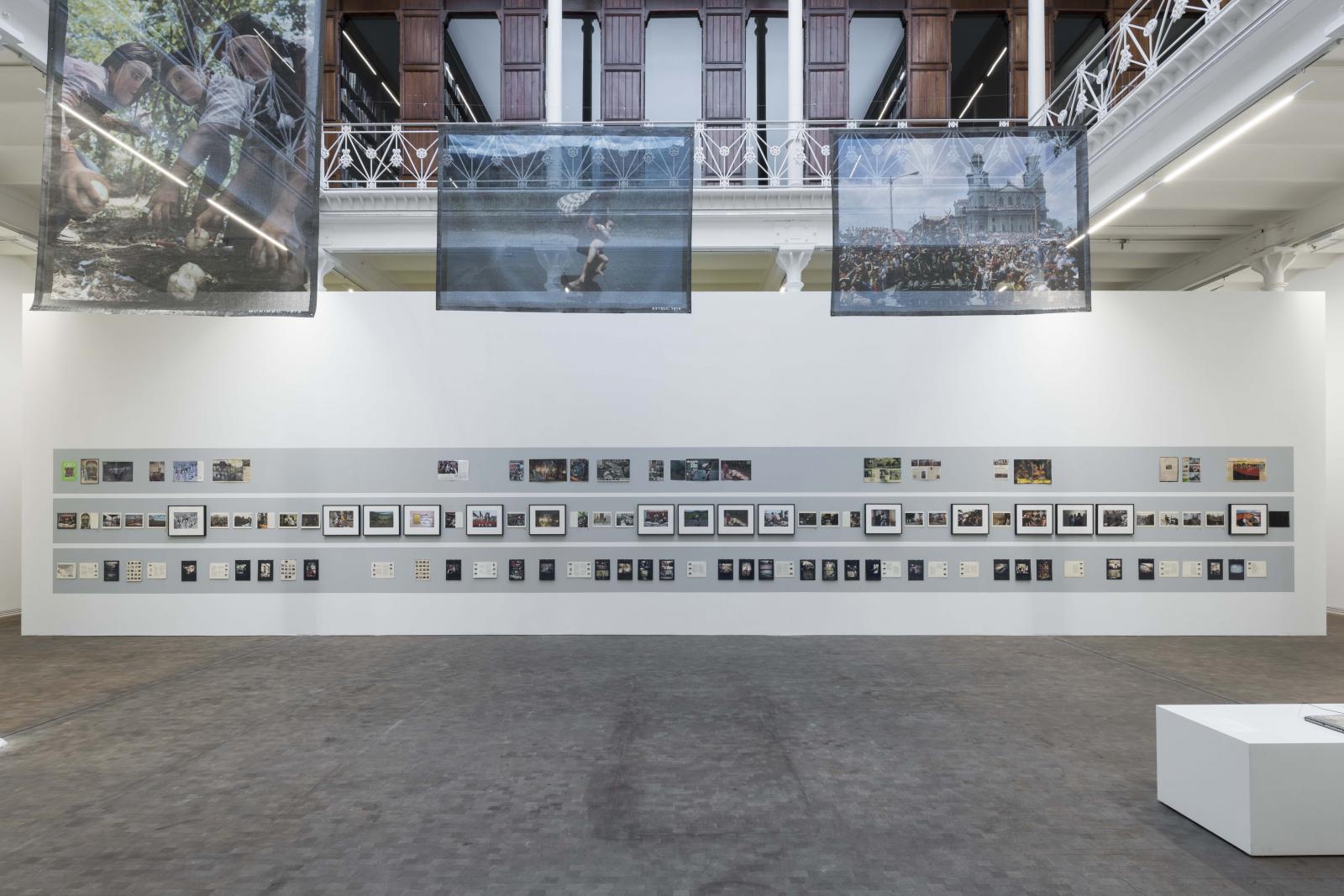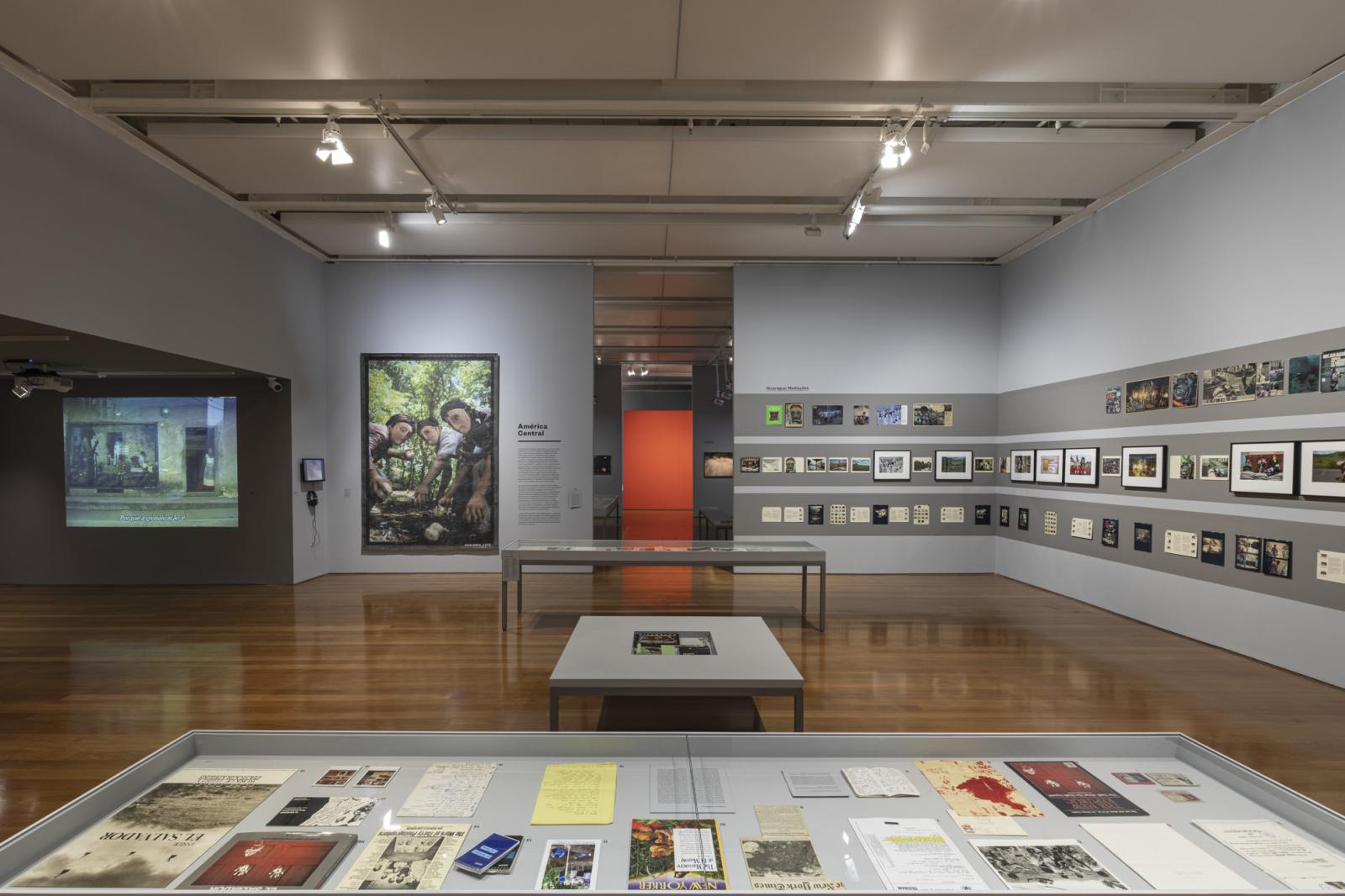Private Story
Mediations Central America
The heart of this exhibition is made up of works in which the artist questions the use of the photographic image. Without an assignment of any sort, Meiselas went to Nicaragua to cover the popular insurrection following the assassination of the editor of the opposition newspaper La Prensa. “I am not a war photographer in the sense that I didn’t go there for that purpose,” explained Meiselas. “I’m really interested in how things come about and not just in the surface of what it is.” Over three decades, in times of war and peace, Meiselas returned to the sites where she took the original photographs, using her book Nicaragua: June 1978–July 1979 (first edition 1981) to find the people she had photographed and record their testimonies, resulting in her third film on Nicaragua, Pictures from a Revolution (1991).
The installations Mediations (1978–1982) and The Life of an Image: Molotov Man (1979–2009) retrace the history of the images she took and the contexts in which they have been published or reappropriated. Some of them became icons of the Nicaraguan revolution. In 2004, she installed large murals of photographs taken during the revolution in the very places where she had captured everyday life during the turmoil. This was a way of questioning the value of the images over time by triggering collective memory. This specific on-site process formed the central theme of the film Reframing History (2004).
The El Salvador series (1978–1983) captures the violence of the military dictatorship and the civil war that followed the coup d’état of 1979. It portrays life continuing near the sites of such killings, revealing the on-going tension between the military and the civilian population.













